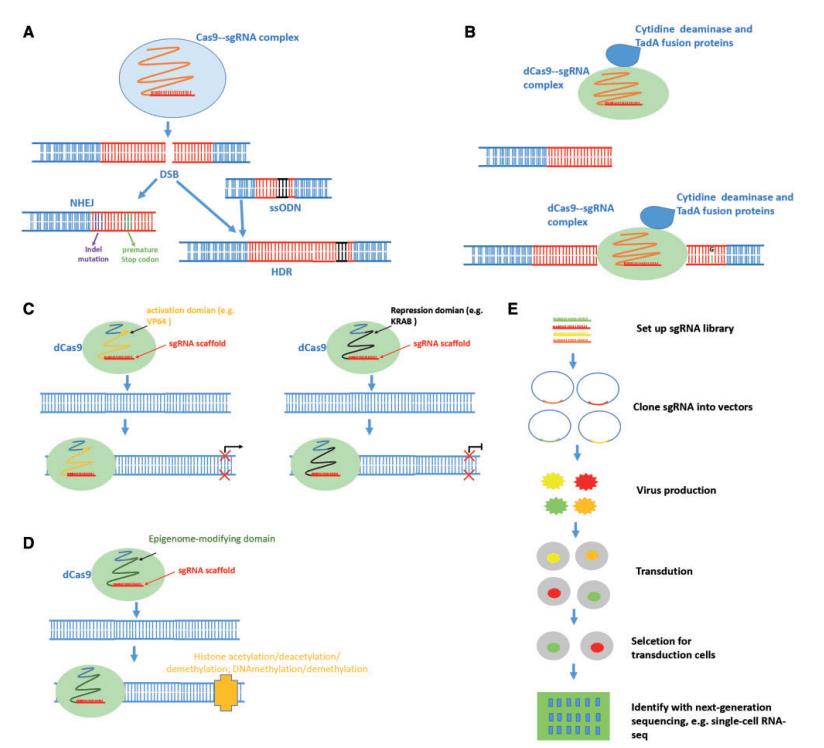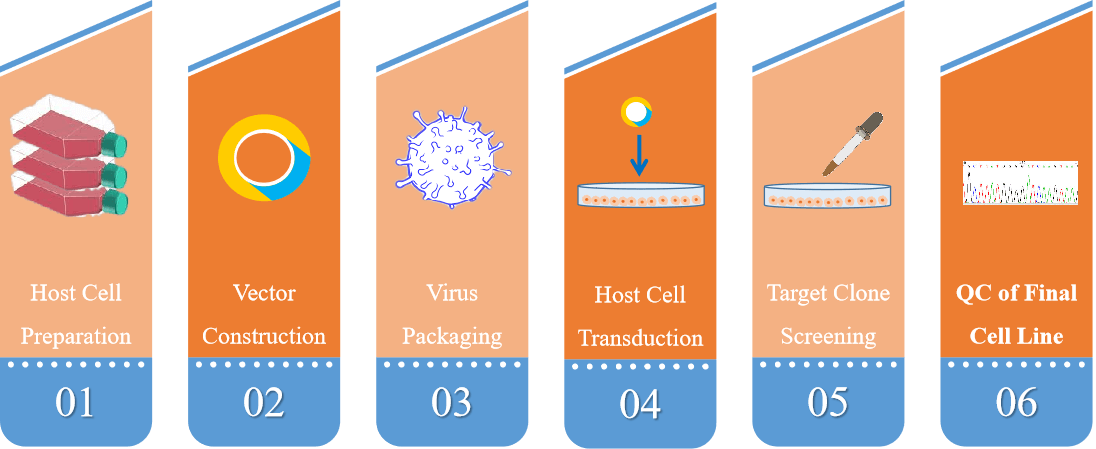Gene Knockout Cell Line Construction Service
Creative Bioarray has many years of experience in stable cell line construction services. Our gene-editing platform can successfully achieve fragment deletion, single gene knockout and multiple genes knockout. Use the most cutting-edge technology and equipment to provide you with transgenic stable cell line solutions. We have established a mature agreement and can provide you with edited stable cell lines according to your requirements.
Gene Knockout
Genome editing is of fundamental importance in biology and medicine due to its ability to make specific changes at target genomic sites in complex organisms. The most widely used gene knockout technology is the CRISPR (Clustered Regulatory Interspaced Short Palindromic Repeats)/Cas9 system. As an effective and simple genome engineering tool, the CRISPR/Cas9 system has received more and more attention. And it has revolutionary applications in transcription perturbation, epigenetic modulation, base editing, high-throughput genetic screening, and disease animal or cell model generation. The CRISPR/Cas9 system includes "guide RNA (gRNA)" and bacterial CRISPR-associated endonuclease (Cas9, molecular scissors). The simplicity and efficiency of the CRISPR/Cas9 system make it a method superior to traditional ZFN and TALEN systems.
 Fig 1. Applications of CRISPR/Cas9 technology. (Zhang C, et al. 2018)
Fig 1. Applications of CRISPR/Cas9 technology. (Zhang C, et al. 2018)
Knockout Cell Lines Constructed With CRISPR
We are experts in gene knockout using CRISPR/Cas9, from designing gRNA constructs to forming stable cell lines. Our gene knockout cell line construction service can generate stable cell lines that permanently knock out the gene of interest (GOI). This service is based on the base editing method and Cas protein to achieve stable knockout of GOI. This service can achieve partial fragment deletion, single gene knockout, and multiple genes knockout. Depending on the cell type, we will use lentivirus or conventional plasmid CRISPR vectors to achieve target gene knockout. Using the target gene provided by the customer, we provide cost-effective gene knockout services. Finally, the final cell line is evaluated by sequencing and molecular hybridization of the target locus to confirm the knockout. In addition, a series of standard QC tests, such as sterility tests and mycoplasma tests, were carried out to release the final cell line products. The progress of the service is regularly updated throughout the service, and transparent services are realized to solve various concerns of customers.
 Fig 2. Lentivirus-based gene knockout stable cell construction service process.
Fig 2. Lentivirus-based gene knockout stable cell construction service process.
Service Contents
| Cell Preparation |
We will select the appropriate cell type according to the needs of the project, and prepare the cells two weeks in advance to maintain their high activity; |
| Identification of Target Knockout Gene |
Identify the coding sequence (CDS) region of the gene and analyze the corresponding genome structure, and then select the appropriate candidate gene knockout site;
|
| sgRNA Design |
Design three to five (3-5) groups of gRNA;
|
| Vector Construction |
Construction using lentiviral vectors;
|
| Cell Transfection |
The constructed vector is transfected into host cells to generate a cell bank. The cells in the cell pool are then sequenced to verify the knockout effect.
|
| Screening for positive clones |
The limiting dilution method was used for monoclonal screening. Positive monoclonal cells will be sequenced, identified, stored, and expanded to establish a cell line.
|
| Stability Test |
Heritage stability test and cell viability test;
|
Creative Bioarray provides a variety of technical service options from gene knockout vector construction to stable cell line construction, helping our customers save costs. You will benefit from our technical expertise and complete platform, and work with you to find the best solution to meet your needs.
If you are interested in our stable cell line construction services, please feel free to contact us. We look forward to working with you in the near future.
References
- Zhang C, Quan R, Wang J. Development and application of CRISPR/Cas9 technologies in genomic editing[J]. Human molecular genetics, 2018, 27(R2): R79-R88.
- Karimian A, Azizian K, Parsian H, et al. CRISPR/Cas9 technology as a potent molecular tool for gene therapy[J]. Journal of cellular physiology, 2019, 234(8): 12267-12277.
- Han J, Zhang J, Chen L, et al. Efficient in vivo deletion of a large imprinted lncRNA by CRISPR/Cas9[J]. RNA biology, 2014, 11(7): 829-835.
For research use only. Not for any other purpose.

 Fig 1. Applications of CRISPR/Cas9 technology. (Zhang C, et al. 2018)
Fig 1. Applications of CRISPR/Cas9 technology. (Zhang C, et al. 2018)
 Fig 2. Lentivirus-based gene knockout stable cell construction service process.
Fig 2. Lentivirus-based gene knockout stable cell construction service process.
